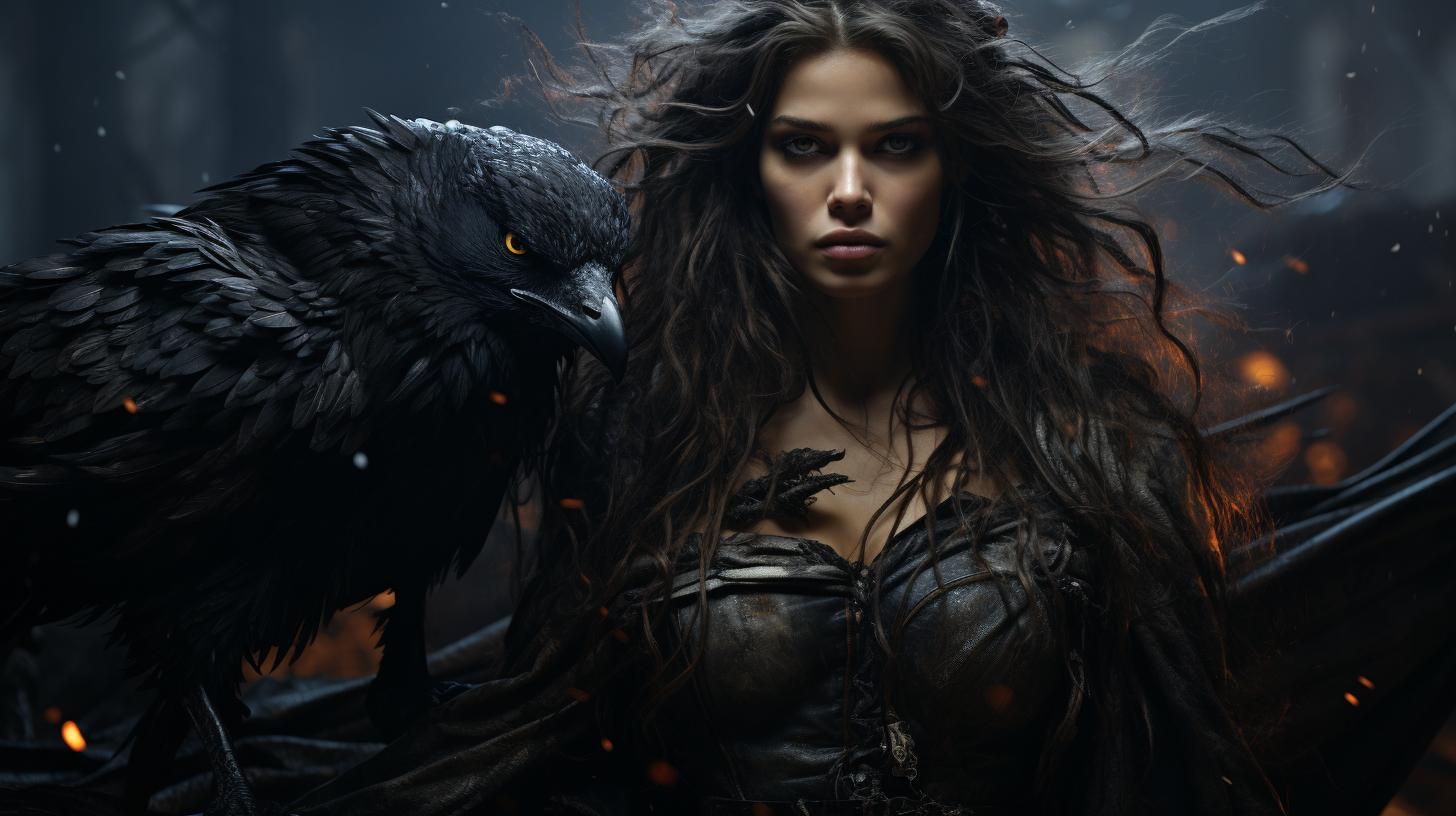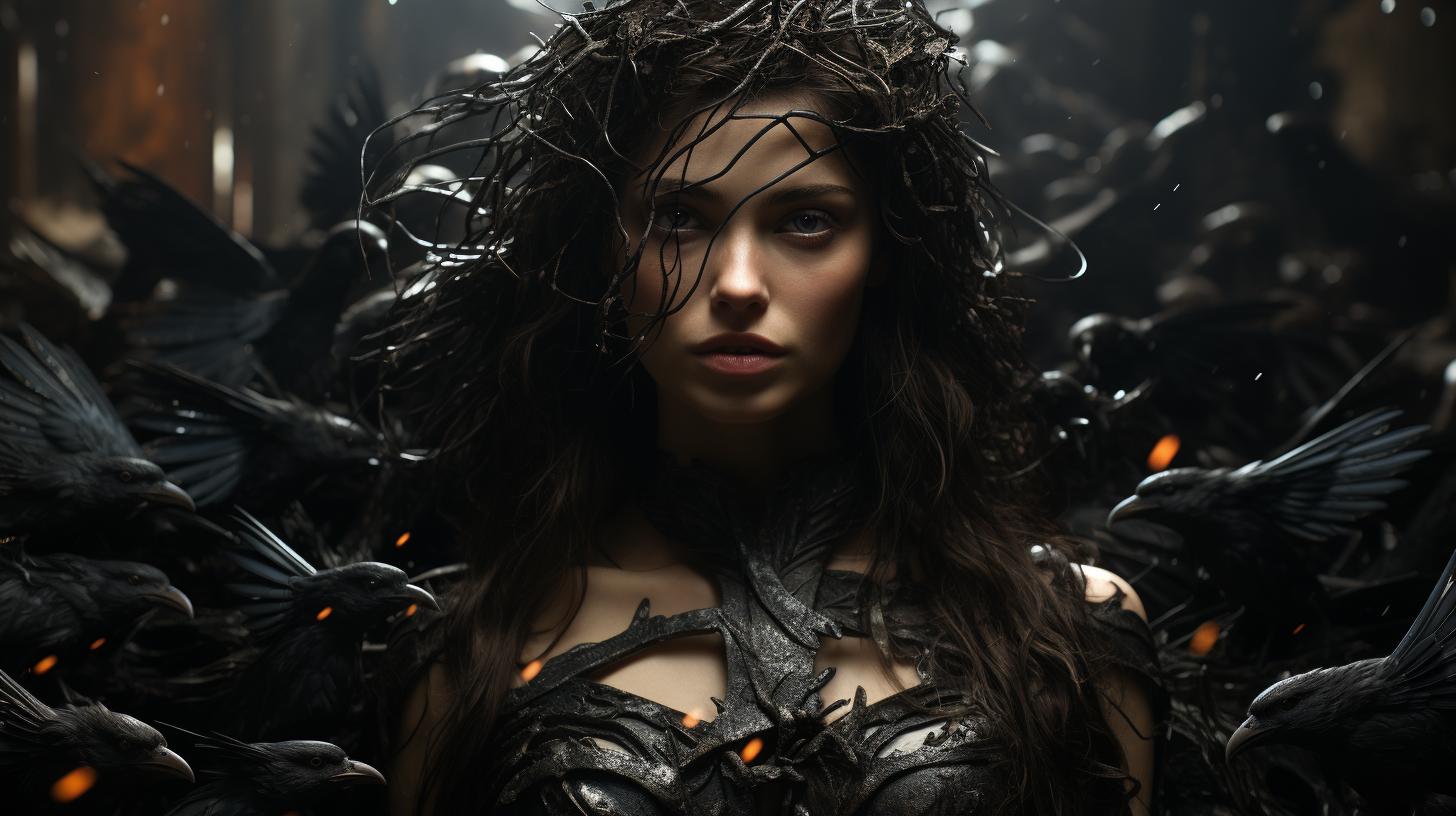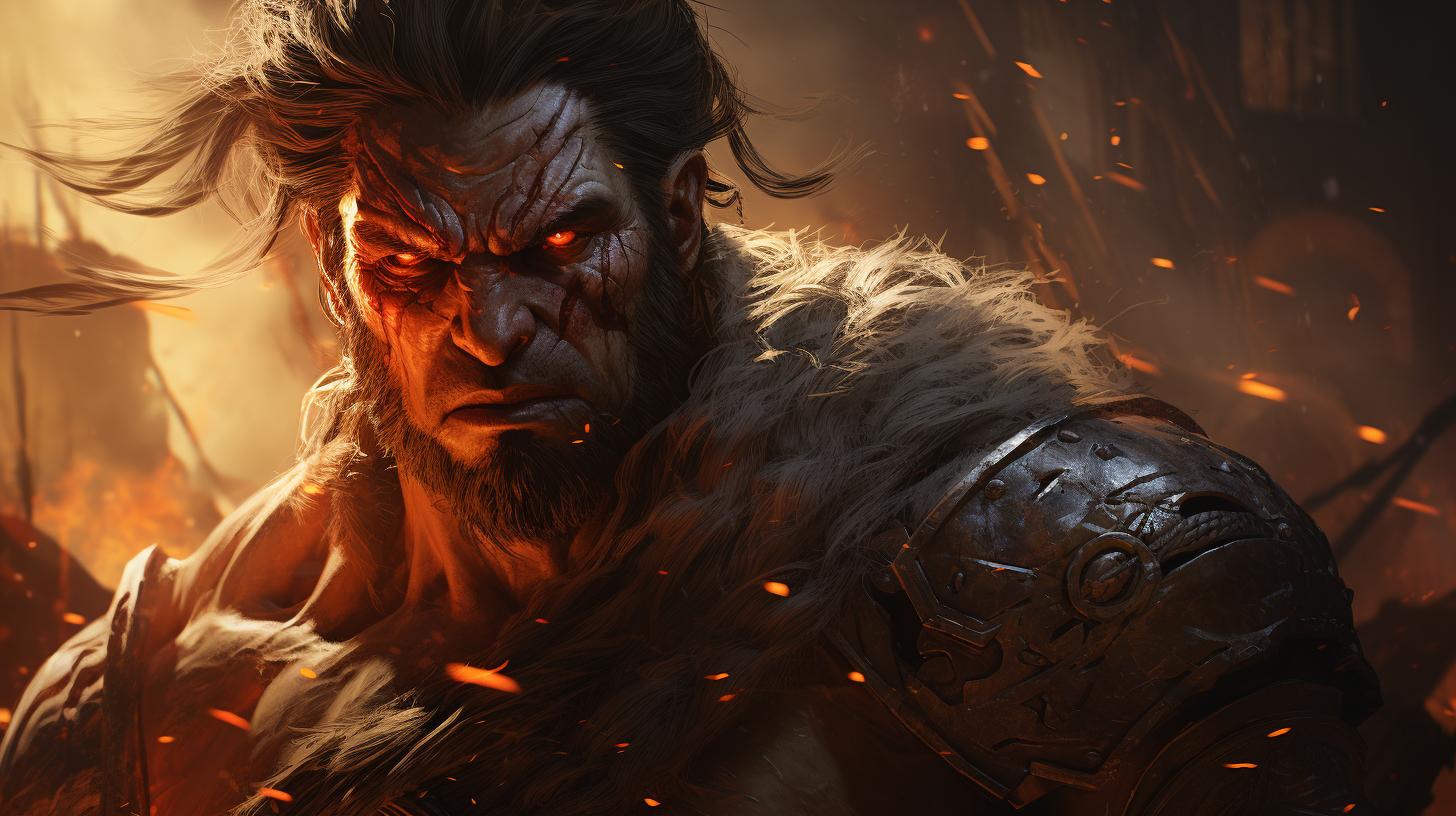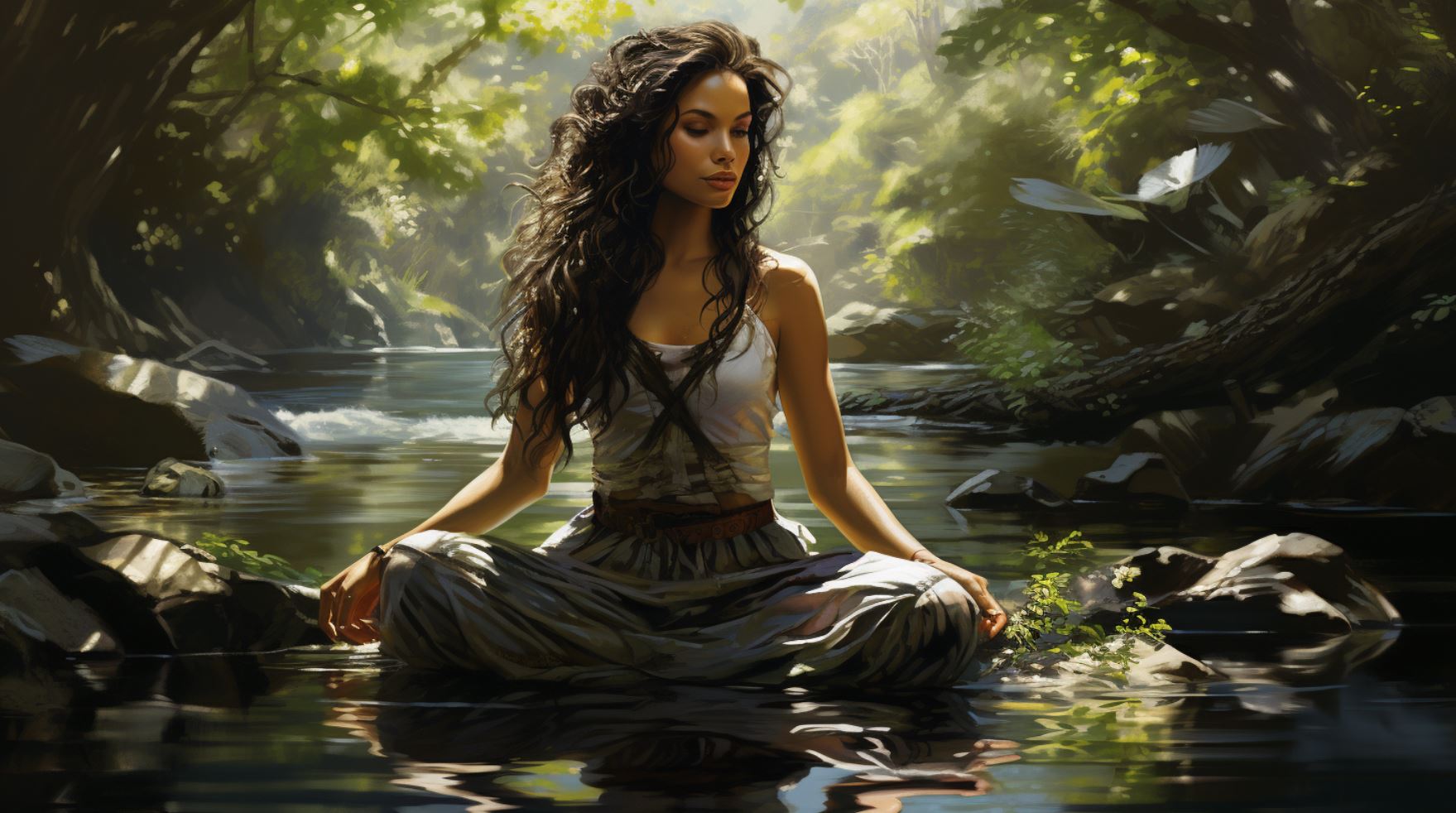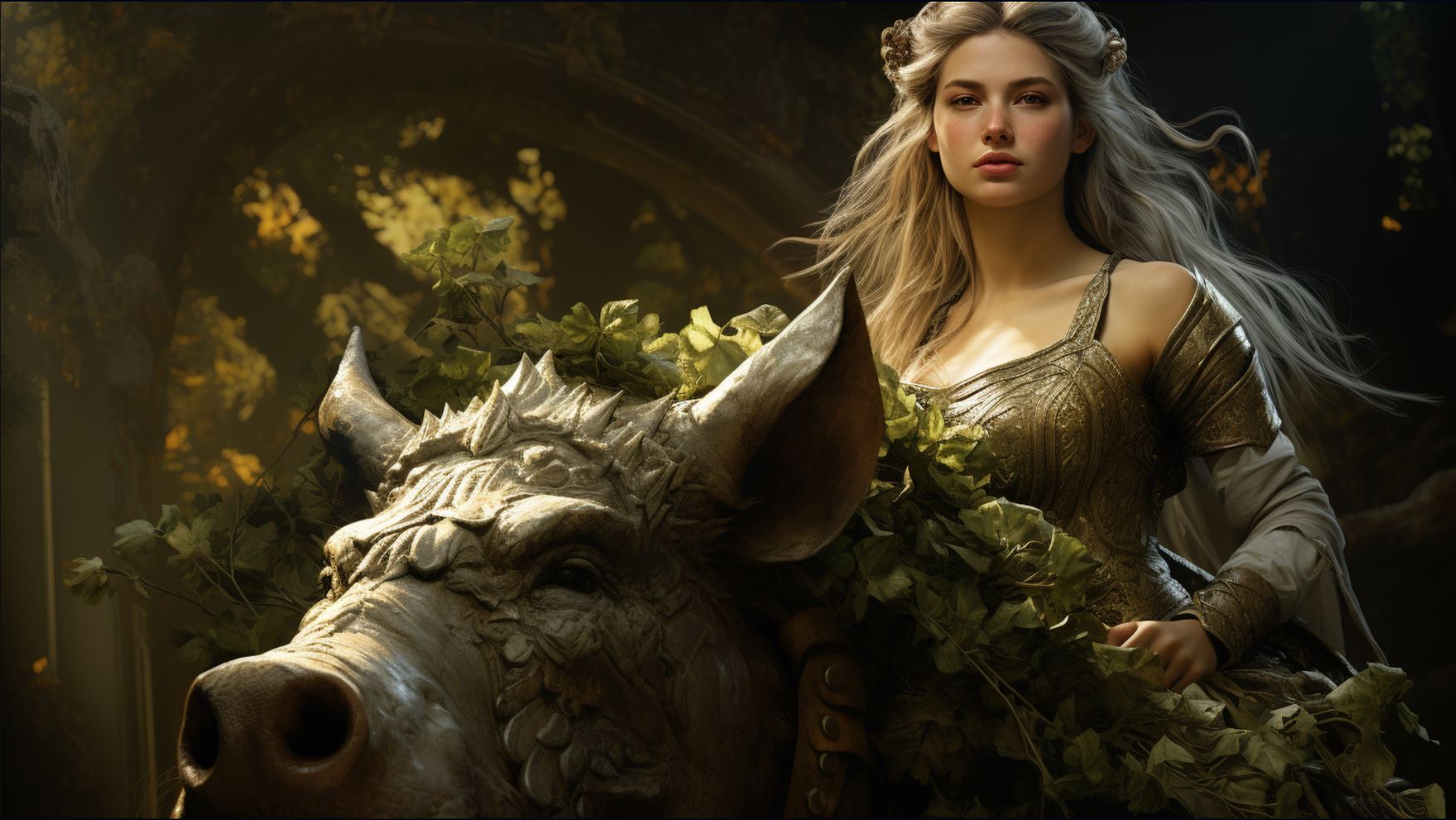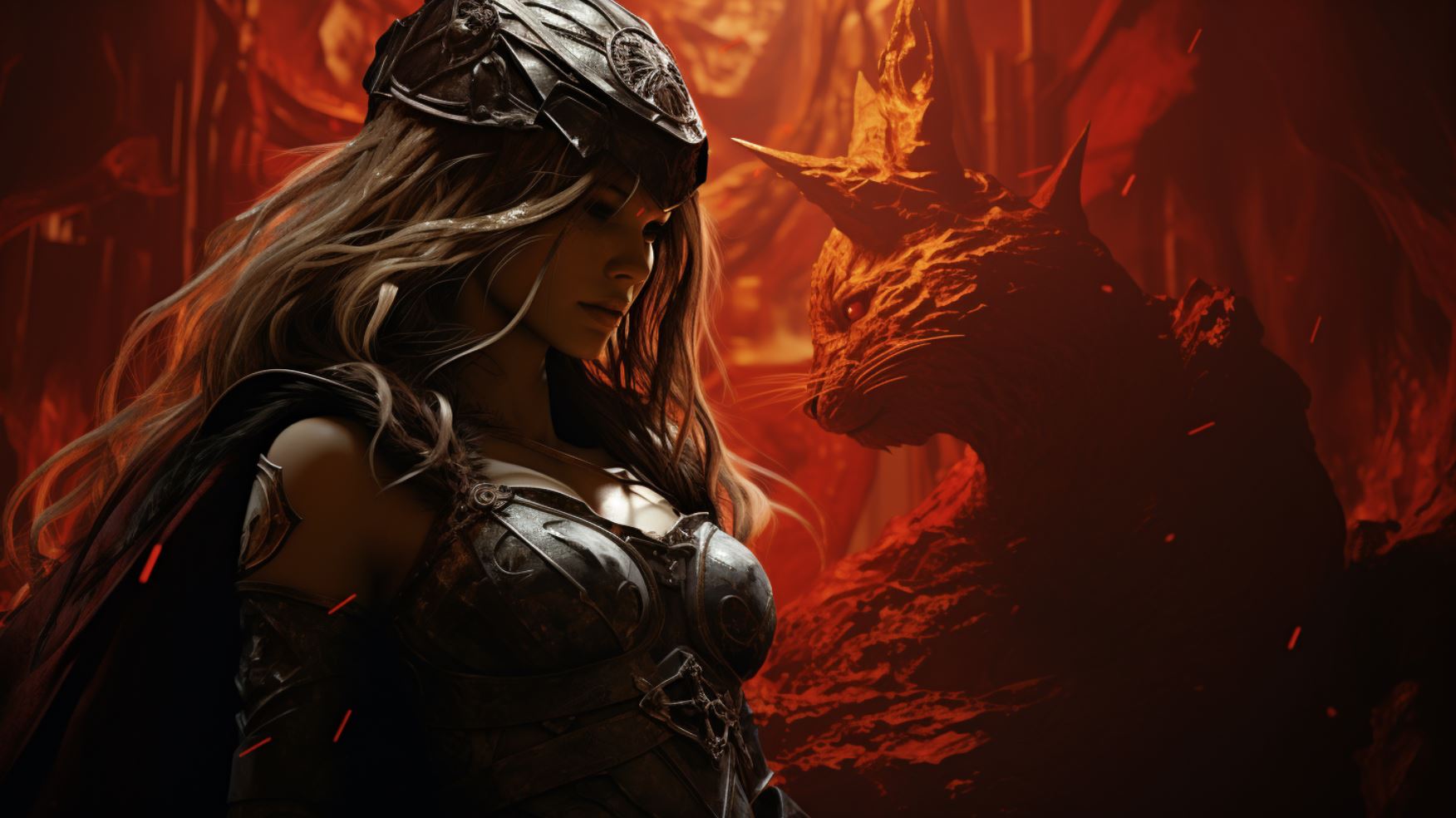The Morrigan Celtic Goddess: Discover the Power and Mystique
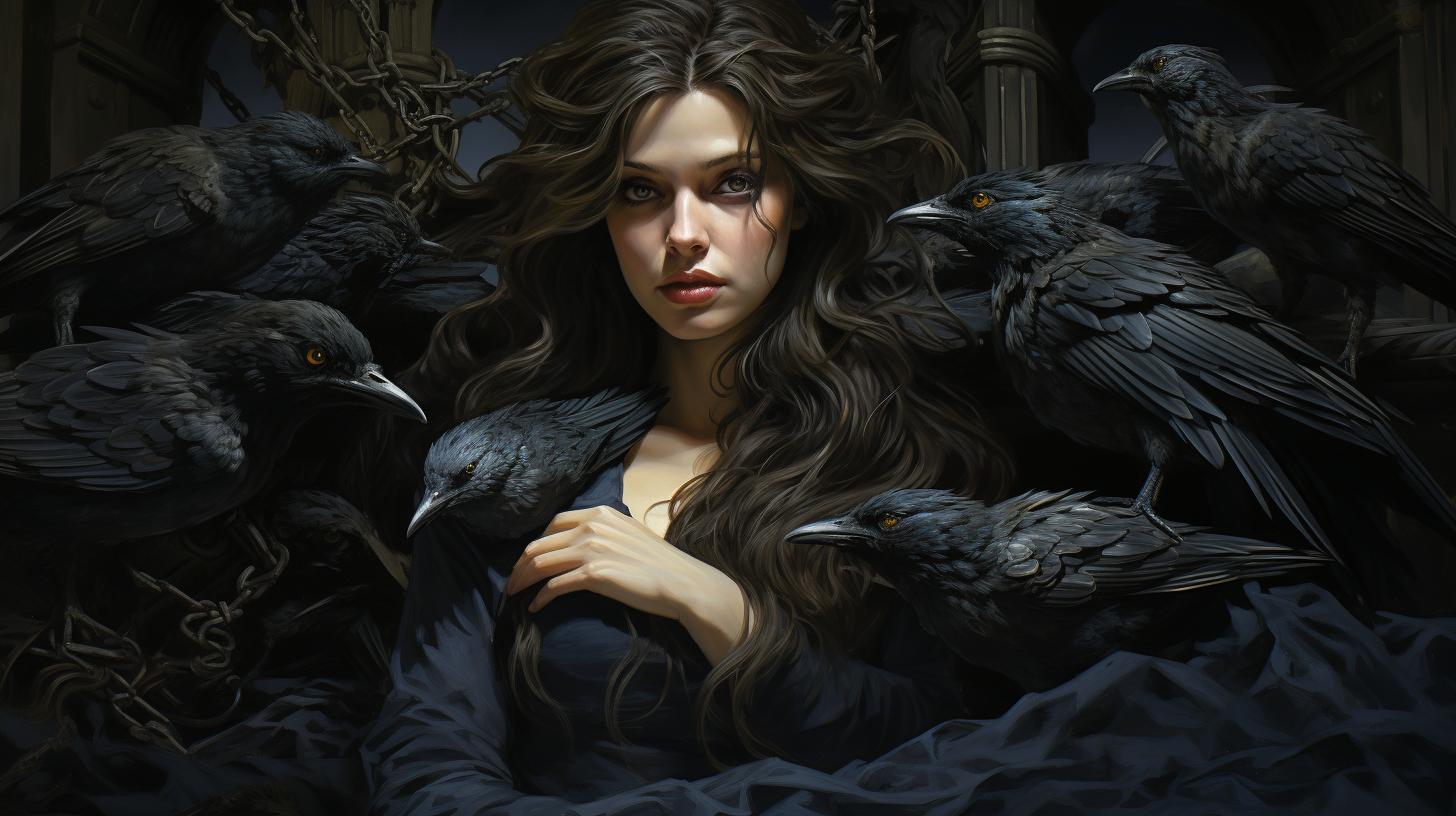
The Morrigan Celtic goddess is a significant figure in Irish mythology. She is known for her complex nature and association with war, battle, and sovereignty. In the Ulster Cycle, she plays a pivotal role in the stories of heroic encounters.
This article explores The Morrigan’s origins, her three aspects – Badb, Macha, and Nemain, as well as her associations with other Celtic gods and goddesses. Additionally, we delve into her presence in Irish and Celtic culture, her influence on modern culture, and different interpretations and beliefs surrounding The Morrigan.
The Morrigan Celtic Goddess: Exploring Her Origins and Mythology
The Morrigan is a fascinating figure in Celtic mythology, encompassing numerous aspects and embodying various themes. This section delves into the intriguing origins of The Morrigan and sheds light on her mythical significance.
Let’s embark on a journey through the rich tapestry of Celtic lore to uncover the mystique surrounding this enigmatic goddess.
The Morrigan in Celtic Mythology: An Introduction
Within the realms of Celtic mythology, The Morrigan stands as a powerful and complex deity. Often depicted as a triple goddess, she embodies sovereignty, war, fate, and transformation. Through her potent presence, The Morrigan weaves a tapestry of myth and magic, leaving an indelible mark on Celtic folklore and spiritual traditions.
The Role of The Morrigan in Irish Folklore
In Irish folklore, The Morrigan assumes a prominent position as both a harbinger of doom and a guardian of sovereignty. She holds sway over battles and possesses the ability to shape-shift and control the outcome of conflicts.
Her presence in ancient tales speaks to the universal human fascination with power, fate, and the interplay between gods and mortals.
The Morrigan and The Ulster Cycle: Tales of Heroic Encounters
At the heart of The Morrigan’s mythology lies her involvement in the Ulster Cycle, a collection of epic tales chronicling the deeds of heroes in ancient Ulster.
She often intertwines her fate with notable figures like Cuchulainn and The Dagda, testing their mettle and influencing the outcome of their quests. The stories of her interactions with these heroes offer insights into her capricious nature and her role as a catalyst for epic events.
Exploring the origins and mythology of The Morrigan unveils the captivating layers of this Celtic goddess, illuminating her impact on Irish folklore and her timeless resonance in the realm of divine beings.
Join us as we dive deeper into the facets and legends surrounding The Morrigan, uncovering the rich tapestry of her existence.
The Morrigan: Exploring Her Three Aspects
In the world of Celtic mythology, the enigmatic figure of The Morrigan is often portrayed as a tripartite goddess, embodying various aspects and powers. Each aspect represents a different facet of her divine nature and holds its own significance within the Celtic pantheon.
Let us delve into the mysteries of this fascinating deity as we explore her three aspects: Badb, Macha, and Nemain.
Badb: The Battle Goddess
As the aspect of Badb, The Morrigan assumes the role of the fierce battle goddess. She personifies the chaotic and unpredictable nature of warfare, capable of inspiring fear and frenzy among warriors.
Often depicted as a crow or raven, she is known to appear on the battlefield, foretelling or aiding in the outcome of conflicts. Her presence signifies both a protector of the land and a harbinger of doom, exemplifying the power and intensity associated with battle.
Macha: The Sovereignty Goddess
Macha, another aspect of The Morrigan, represents the sovereignty goddess. She embodies the land itself, its fertility, and its prosperity. Often associated with kingship and rulership, Macha symbolizes the rightful authority of the land and its people.
She is revered for her ability to grant victory in battle, ensure the well-being of the kingdom, and maintain the equilibrium between the divine and mortal realms. Through her aspect of Macha, The Morrigan showcases her influence over matters of governance and prosperity.
Nemain: The War Goddess
The third aspect of The Morrigan is Nemain, the war goddess. Unlike Badb, who thrives in the midst of battle, Nemain embodies the chaos and destruction that accompany warfare. She is often portrayed as a terrifying figure, inciting frenzy and bloodlust among combatants.
Nemain’s presence reveals the darker side of conflict, reminding warriors of the brutal and relentless nature of war. Through her aspect of Nemain, The Morrigan manifests her terrifying power and unyielding determination.
These three aspects of The Morrigan, Badb, Macha, and Nemain, represent significant components of her mythological existence. Each aspect contributes to the rich tapestry of Celtic folklore, showcasing the complex and multifaceted nature of this extraordinary goddess.
Her influence in Irish and Celtic culture continues to be a source of inspiration and fascination, captivating those who seek to understand the depths of her power and mystique.
The Morrigan’s associations and encounters
The Morrigan, with her complex and enigmatic nature, has been intertwined with various gods and goddesses in Celtic mythology.
Her interactions with other deities shed light on her significance and influence within the pantheon.
The Morrigan and Cuchulainn: An Intertwined Fate
One of the most notable associations in Irish mythology is that of The Morrigan and Cuchulainn, the legendary hero of the Ulster Cycle. Their destinies are entwined through tales of fierce battles and challenges.
The Morrigan often takes on the form of a crow, appearing as a prophetic figure who tests and aids Cuchulainn in his epic feats. Their intricate relationship symbolizes the intricate dance between war and fate.
The Morrigan and The Dagda: A Divine Connection
The Morrigan’s interactions with The Dagda, one of the prominent gods in Celtic mythology, signify a divine connection between power and fertility. In some stories, The Morrigan engages in a sexual union with The Dagda, further blurring the lines between warfare and sovereignty.
This mystical union represents the intricate balance between strength and creation within the Celtic cosmology.
The Morrigan and Other Celtic Gods/Goddesses
- Danu: The Morrigan shares a connection with Danu, an ancient mother goddess in Celtic mythology. Both goddesses embody elements of war, sovereignty, and fertility, showcasing the interplay between these powerful aspects of life.
- Lugh: The Morrigan is also associated with Lugh, the god of craftsmanship and skill.
Together, they exemplify the multifaceted nature of Celtic deities and their diverse domains of influence.
- Brigid: In some narratives, The Morrigan is linked to Brigid, the goddess of poetry, healing, and agriculture.
This connection highlights the interconnectedness of different realms of Celtic life—warfare, creativity, and nurturing.
These associations and encounters between The Morrigan and other Celtic gods and goddesses demonstrate the complexity and interconnectedness of the deities within the ancient Celtic pantheon.
They reflect the various facets of existence and the delicate balance between power, fate, and creation in Celtic mythology.
The Morrigan in Irish and Celtic Culture
The Morrigan’s presence in Irish and Celtic culture is deeply rooted and multifaceted. From Irish language and literature to art and symbolism, her influence can be seen throughout ancient Ireland and continues to resonate in modern times.
Let’s explore the various aspects of The Morrigan’s significance in Irish and Celtic culture.
The Morrigan in Irish Language and Literature
Within the realm of Irish language and literature, The Morrigan holds a prominent role. She is often depicted in ancient Irish texts, such as the Táin Bó Cúailnge (The Cattle Raid of Cooley), where her divine presence and prophetic abilities add depth to the narrative.
Her character showcases the complexities of power, fate, and warfare, highlighting her enduring impact on Irish literary traditions.
The Morrigan in Art and Symbolism in Ancient Ireland
The artistic representations and symbolism associated with The Morrigan in ancient Ireland offer further insights into her significance. Depictions of battle scenes, where she appears as a fierce goddess, convey her association with war and the protection of sovereignty.
Her symbolic presence in various forms of art, such as stone carvings and jewelry, showcases the admiration and reverence ancient Celtic societies held for The Morrigan.
The Morrigan’s Influence on Modern Culture
As we transition into modern times, The Morrigan’s influence remains prevalent. Her allure persists in contemporary art, literature, and music inspired by Celtic mythology. Many individuals also find spiritual connections to her through contemporary Paganism and Neo-Druidism, where The Morrigan is revered as a powerful goddess associated with personal transformation, courage, and female empowerment.
The Morrigan’s enduring appeal in modern culture serves as a testament to her timeless significance.
The Morrigan: Interpretations and Beliefs
The Morrigan, being a complex and enigmatic goddess, has garnered various interpretations and beliefs throughout history and in contemporary times. This section explores some of these perspectives, shedding light on The Morrigan’s significance in different contexts.
Historical and Scholarly Perspectives on The Morrigan
Historians and scholars have delved into the ancient texts and folklore to unravel the mysteries surrounding The Morrigan. Their analyses provide insightful glimpses into the symbolic meaning and cultural implications associated with this Celtic deity.
Interpretations from a historical perspective often highlight The Morrigan’s role as a battle goddess, symbolizing the turbulent nature of war and conflict in ancient times. Moreover, they emphasize her association with sovereignty and suggest that she represents the power of the land.
The Morrigan in Contemporary Paganism and Neo-Druidism
Within the realm of modern spirituality, The Morrigan continues to be revered and worshipped by many adherents of Paganism and Neo-Druidism. Her image and symbolism have become integral parts of their rituals, ceremonies, and magical practices.
Contemporary Pagans and Neo-Druids often interpret The Morrigan as a goddess of transformation, embodying qualities of shadow and light, death and rebirth. They recognize her as a guide and protector, invoking her energy for inner strength, courage, and accessing one’s personal power.
Practitioners draw inspiration from The Morrigan’s connection to Celtic mythology and weave her presence into their spiritual journeys, seeking her wisdom and guidance in navigating life’s challenges and embracing personal transformation.

